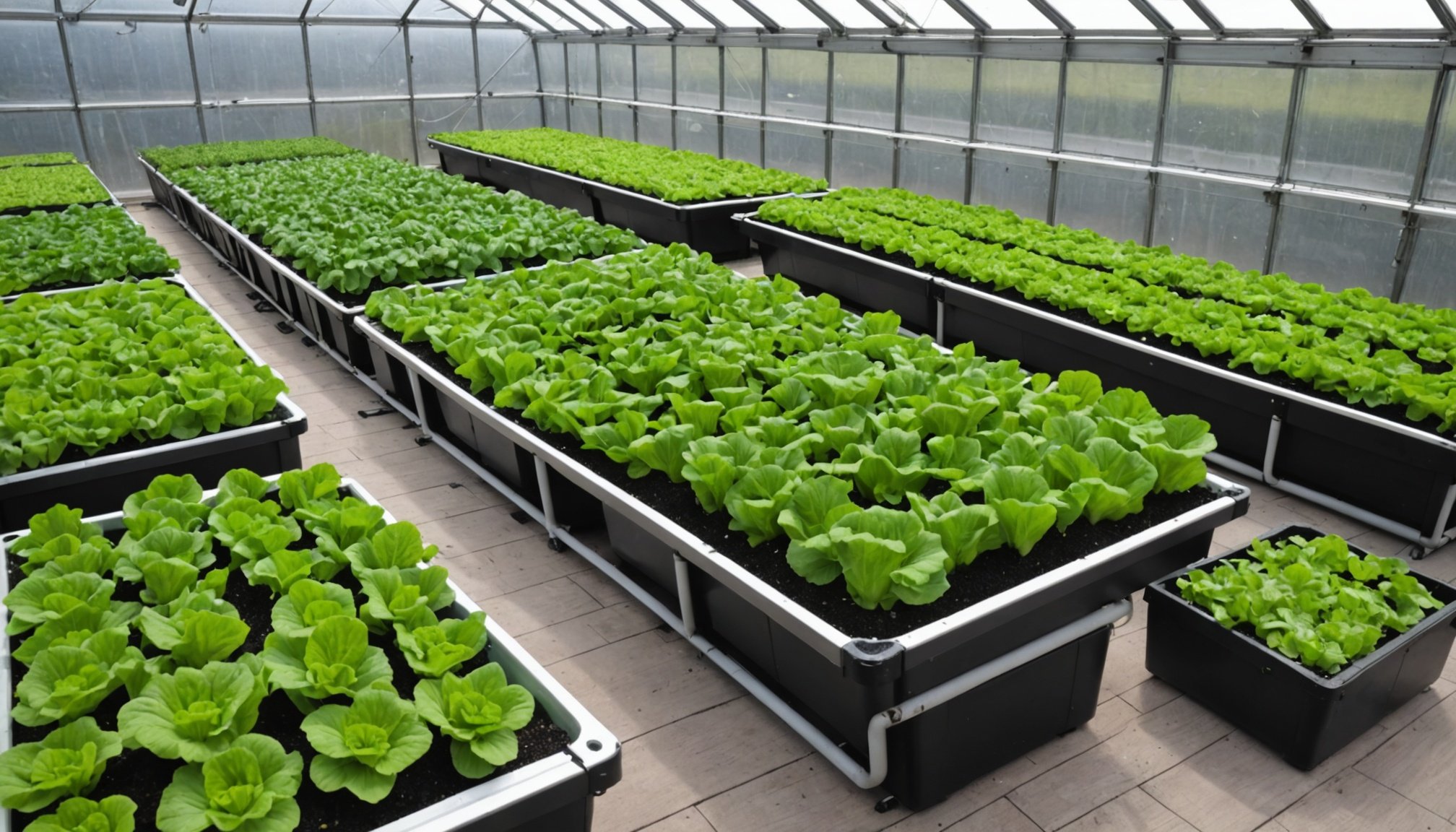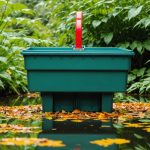Urban living often means limited outdoor space, yet you can cultivate lush vegetable gardens through innovative methods like aquaponics. This sustainable farming technique combines aquaculture and hydroponics, allowing you to grow fresh produce and fish right at home. Discover how to create a thriving urban garden that not only beautifies your space but also contributes to a greener environment. Ready to transform your urban area into a thriving oasis? Let’s explore the possibilities of aquaponics in the UK!
Introduction to Aquaponics in Urban UK Environments
Aquaponics is a sustainable gardening technique that combines aquaculture and hydroponics to create a symbiotic environment where plants and aquatic animals thrive together. This innovative method is gaining popularity in urban gardening, particularly in the UK, where space is limited, and the need for sustainable solutions is growing.
En parallèle : Unlocking the Secrets to Thriving Winter Gardening in the UK”s Chilly Climate
In urban settings, aquaponics offers a unique solution to the challenges of traditional gardening. By using less water and space, it enables city dwellers to grow fresh produce and fish in their own homes or community spaces. This system recycles nutrients, making it an eco-friendly option for those interested in sustainable gardening practices.
UK urban gardening trends have seen a significant shift towards more sustainable practices, with aquaponics leading the way. As cities become more crowded, the demand for efficient and environmentally friendly gardening methods has increased. Aquaponics not only addresses these needs but also promotes local food production, reducing the carbon footprint associated with transporting produce from rural areas.
A lire également : Transform Your UK Garden into a Pet Paradise: A Guide to Creating an Animal-Friendly Outdoor Space
In summary, aquaponics represents a forward-thinking approach to urban gardening in the UK, aligning with the broader movement towards sustainability and self-sufficiency in city living.
Setting Up an Aquaponics System
Embarking on a DIY aquaponics project in urban settings can transform limited spaces into thriving ecosystems. Understanding the essential components is the first step in setting up your aquaponics system. These include a fish tank, grow bed, water pump, and a filtration unit. Each element plays a crucial role in maintaining the balance between fish and plants.
Essential Components
-
Fish Tank: This is where the aquatic animals reside. It's vital to choose a tank size appropriate for your space and the number of fish.
-
Grow Bed: Positioned above the fish tank, it houses the plants. The bed should allow water to flow freely, providing nutrients from fish waste to the plants.
-
Water Pump: A small, efficient pump circulates water from the fish tank to the grow bed, ensuring a continuous nutrient cycle.
- Filtration Unit: Essential for converting fish waste into nutrients, ensuring water remains clean for both fish and plants.
Building Your System
For urban farming enthusiasts, a simple aquaponics setup can be achieved with basic tools. Recommended materials include PVC pipes for water flow, clay pebbles for the grow bed, and a sturdy frame to support the structure. With these components, urban gardeners can create a sustainable and efficient aquaponics system.
Choosing the Right Vegetables for Aquaponics
Selecting the most suitable vegetables for your aquaponics system in the UK is crucial for ensuring a successful harvest. The choice of aquaponics crops should align with the local climate and the specific conditions of your system.
Best Vegetable Species for Aquaponics in the UK
In the UK, leafy greens such as lettuce, spinach, and kale thrive in aquaponic systems due to their fast growth and low nutrient requirements. Herbs like basil and mint are also excellent choices, as they flourish in water-based environments.
Factors to Consider When Selecting Crops
When choosing crops, consider the temperature and light conditions of your setup. Leafy greens typically require less light and can tolerate cooler temperatures, making them ideal for the UK climate. Additionally, consider the nutrient needs of different plants; balancing these with the fish species in your system is essential.
Seasonal Planting Tips for Urban Environments
To maximise yield, align your planting schedule with the seasons. In spring, start with fast-growing greens, while summer can support fruiting plants like tomatoes if conditions allow. Adjust your system's conditions to mimic natural seasonal changes, ensuring optimal growth throughout the year.
Benefits of Aquaponics for Urban Gardening
Aquaponics offers numerous environmental benefits for urban gardening, making it a standout choice for sustainable agriculture. By integrating fish and plant cultivation, aquaponics systems significantly reduce water usage compared to traditional gardening methods. This reduction is crucial in urban areas where water resources are often limited. Additionally, the closed-loop system minimizes waste, as fish waste is converted into nutrients for plants, promoting a natural recycling process.
From an economic perspective, aquaponics presents clear advantages for urban gardeners. The initial investment in setting up an aquaponics system can be offset by long-term savings on water and fertilisers. Urban food production through aquaponics also allows gardeners to grow their own produce, reducing reliance on store-bought vegetables and herbs, thus lowering grocery expenses.
In terms of food security, aquaponics contributes significantly to urban areas. By enabling local food production, it reduces the dependency on external food supplies, which can be vulnerable to disruptions. This self-sufficiency is particularly beneficial in densely populated cities where access to fresh produce might be limited. Moreover, aquaponics supports biodiversity by allowing a variety of plants and fish to coexist, enhancing urban ecosystems.
Maintenance and Troubleshooting in Aquaponics
Maintaining an aquaponics system is crucial for ensuring its long-term success and productivity. Regular aquaponics maintenance tasks include monitoring water quality, feeding fish, and checking system components for wear and tear. Ensuring the balance of pH levels and nutrient concentrations is vital.
Routine Maintenance Tasks
- Water Quality: Regularly test pH, ammonia, nitrite, and nitrate levels to keep the system healthy.
- Fish Care: Feed fish appropriate amounts to prevent overfeeding, which can lead to water quality issues.
- Equipment Check: Inspect pumps and filters to ensure they are functioning correctly, preventing potential system failures.
Common Issues and Solutions
Aquaponics systems can face several challenges. Algae growth, for instance, can be controlled by reducing light exposure to the water. If plants show signs of nutrient deficiency, adjusting the fish feed or supplementing nutrients might be necessary.
Tips for System Health
Maintaining optimal water quality is essential for both plant and fish health. Regularly clean the system to prevent blockages. Introduce beneficial bacteria to aid in nutrient conversion. By following these troubleshooting tips, you can ensure a thriving aquaponics system.
Case Studies of Successful Urban Aquaponics
Urban aquaponics success stories are emerging across the UK, showcasing the potential of this innovative gardening method. Notable case studies include community gardens in cities like London and Manchester, where aquaponics systems have been integrated into urban landscapes. These projects highlight how aquaponics can transform unused spaces into productive ecosystems.
Overview of Notable Projects
In London, community gardens have adopted aquaponics to enhance local food production. These projects often involve collaboration between residents, local councils, and environmental organisations. By using aquaponics, these gardens produce fresh vegetables and fish, contributing to food security and sustainability in urban areas.
Lessons Learned
Successful implementations reveal the importance of community engagement and education. Engaging local residents in the setup and maintenance of aquaponics systems fosters a sense of ownership and responsibility. Educational workshops are often conducted to teach participants about sustainable gardening practices and the benefits of aquaponics.
Community Engagement and Educational Aspects
Community gardens serve as educational hubs, where people learn about the environmental benefits of aquaponics. They provide hands-on experiences, encouraging participants to explore sustainable agriculture methods. This approach not only promotes environmental awareness but also strengthens community bonds, making urban aquaponics a valuable resource for cities.
Visual Aids and Step-by-Step Instructions
In the realm of aquaponics, visual aids are invaluable for both beginners and seasoned urban gardeners. They simplify complex concepts, making it easier to grasp the intricacies of setting up and maintaining an aquaponics system. Diagrams and photos serve as effective tools, illustrating the layout of components like fish tanks, grow beds, and filtration units. These visuals can demystify the process, guiding users through each phase of their aquaponics journey.
Step-by-Step Instructions for Beginners
For those new to aquaponics, step-by-step instructions are essential. Start by selecting a suitable location with adequate light and space. Next, assemble your fish tank, ensuring it's appropriately sized for your chosen fish species. Install the grow bed above the tank, allowing for efficient water flow. Connect a water pump to circulate nutrients and add a filtration unit to maintain water quality.
Visual guides can also provide urban gardening tips, such as optimising space and choosing appropriate plant species. By following these structured instructions and utilising visual aids, aspiring aquaponic gardeners can confidently create and sustain their own urban ecosystems.
Local Policies and Regulations for Urban Farming
Navigating urban farming regulations is crucial for successfully implementing aquaponics systems in the UK. These regulations can vary significantly across different regions, impacting the setup and operation of aquaponics projects. Understanding local policies ensures compliance and avoids potential legal issues.
Urban gardeners should start by researching the specific local policies that pertain to aquaponics. This includes zoning laws, water usage restrictions, and waste disposal guidelines. Many local councils offer resources and guidance to help individuals understand and adhere to these regulations. Engaging with these resources can simplify the process of obtaining necessary permits and approvals.
Community support and advocacy play a vital role in shaping favourable aquaponics compliance frameworks. By building relationships with local authorities and participating in community discussions, urban gardeners can influence the development of policies that support sustainable practices. Collaboration with environmental organisations can also provide additional resources and expertise.
For those new to urban farming, joining local gardening groups or forums can offer valuable insights and support. These communities often share experiences and advice on navigating the regulatory landscape, making it easier for newcomers to establish their aquaponics systems while ensuring full compliance with local laws.
Resources for Sourcing Materials and Plants
Navigating the world of aquaponics resources can be daunting, but finding the right suppliers and communities is key to success. In the UK, several suppliers specialise in sourcing materials for aquaponics, providing everything from fish tanks to grow beds. Companies like Aquaponics UK and The Aquaponic Source offer comprehensive kits tailored for urban gardening needs.
When it comes to sourcing healthy plants and fish, quality is paramount. Look for reputable nurseries and fish farms that provide disease-free stock. For plants, choose those well-suited to aquaponic systems like leafy greens and herbs. Ensure fish species are compatible with your system's conditions, focusing on those that thrive in aquaponic environments.
Online resources and communities are invaluable for urban aquaponics enthusiasts. Websites such as Aquaponics Nation and UK Aquaponics Community Forum offer forums for sharing experiences and advice. These platforms connect gardeners, fostering a supportive network where members can exchange tips on sourcing materials and maintaining systems. Engaging with these communities not only enhances your knowledge but also keeps you updated on the latest trends and innovations in urban aquaponics.












